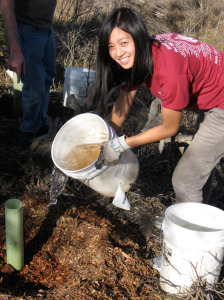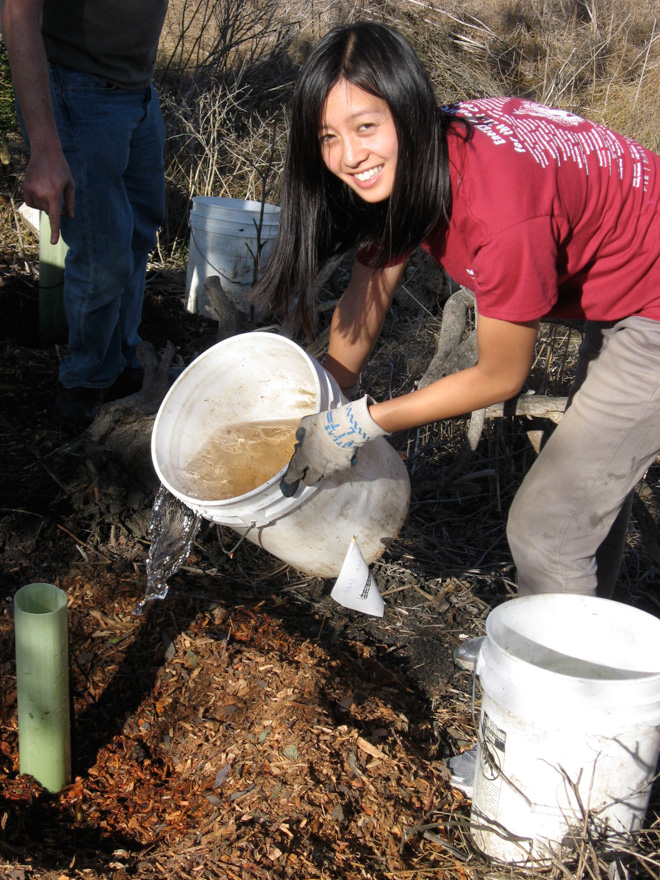
The drought had left the soil around The Dish unforgiving, stuck in large chunks that were hard as rock. However, that didn’t prevent members of the local community from taking part in bettering plant life on The Dish trail this Saturday.
This weekend, over 50 Stanford students, high school students and families took part in loosening the soil and adding new native plants on The Dish during an event planned by a local organization called Magic. Magic gathered community members at The Dish trail for an event where each person learned how to plant plants, dig out ditches for water retention, set up tree shelters and use simple gardening tools.
“We took 60 California native plants and we inserted them into a largely alien landscape,” said David Schrom, the founder of Magic and a lecturer of Valuescience at Stanford. “We’re going to see if we’re able to establish these plants, which will provide habitat for other kinds of organisms that have grown in association with them for millions of years.”
In the past forty years of Magic’s Dish planting sessions, the soil quality had never been as dry and hard to break up as it was this year, remarked many organizers and volunteers.
Although the planting session was a success, the current California drought did not make the task easy and continues to pose problems for maintaining plant life.
“It’s been very difficult to dig,” said Tom Myers, a supervisor for the event. “This soil is like cement.”
“It makes it a lot harder for us to meet our goals,” said Gustavo Chavez ’15, another supervisor. “It means we’ll be out here during winter time—when it should be raining—watering the plants.”
The harder process this year didn’t stop the volunteers from enjoying their time however.
Ben and Caroline Pecore, age 5 and 9, particularly enjoyed digging the soil and playing with the mulch.
“It’s hard to find service opportunities for young children,” said Rebecca Pecore, mother of Ben and Caroline. “We walk the dish all the time as a family, so it’ll be nice to see the trees growing. It’s great for them to learn about planting a tree and how it’s properly done. I thought it might be too hard for us, or it might be too long for us, and neither was true. It was a great family activity for a few hours.”
“I really like meeting people from and outside of Stanford,” Chavez said. “I think a lot of the people here are high school students or parents who want to give back to the community, and getting to know them while doing community service at the same time is just an awesome experience. I get to talk to high school students who remind me of high school seven years ago. It’s a really neat experience talking to them.”
Schrom is planning the next planting session for early December and hopes his efforts will help bring about larger climate change.
“What happens out here—you see little kids, high school students, Stanford students who don’t normally get their hands in the dirt—they come out and they learn something and if we’re lucky, or skilled, or some combination of the two, people change what’s in their heads and hearts and they start making bigger connections,” he said.
“The human consciousness is a key element in the biosphere,” he added. “And this project right now, believe it or not, even though what we’re doing is digging in the dirt, is to me much more about human consciousness.”
Contact Jeremy Quach at jquach ‘at’ stanford.edu.
